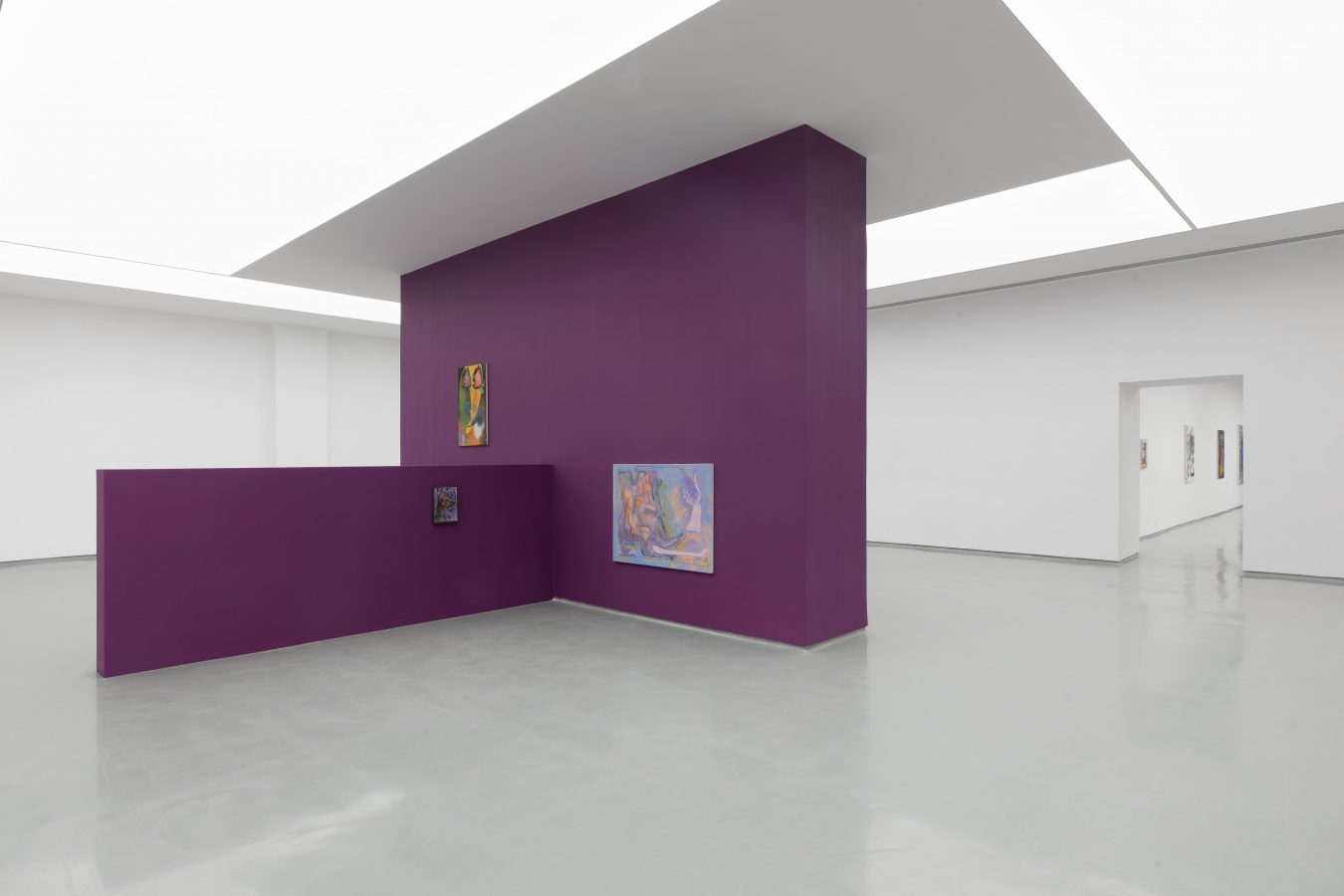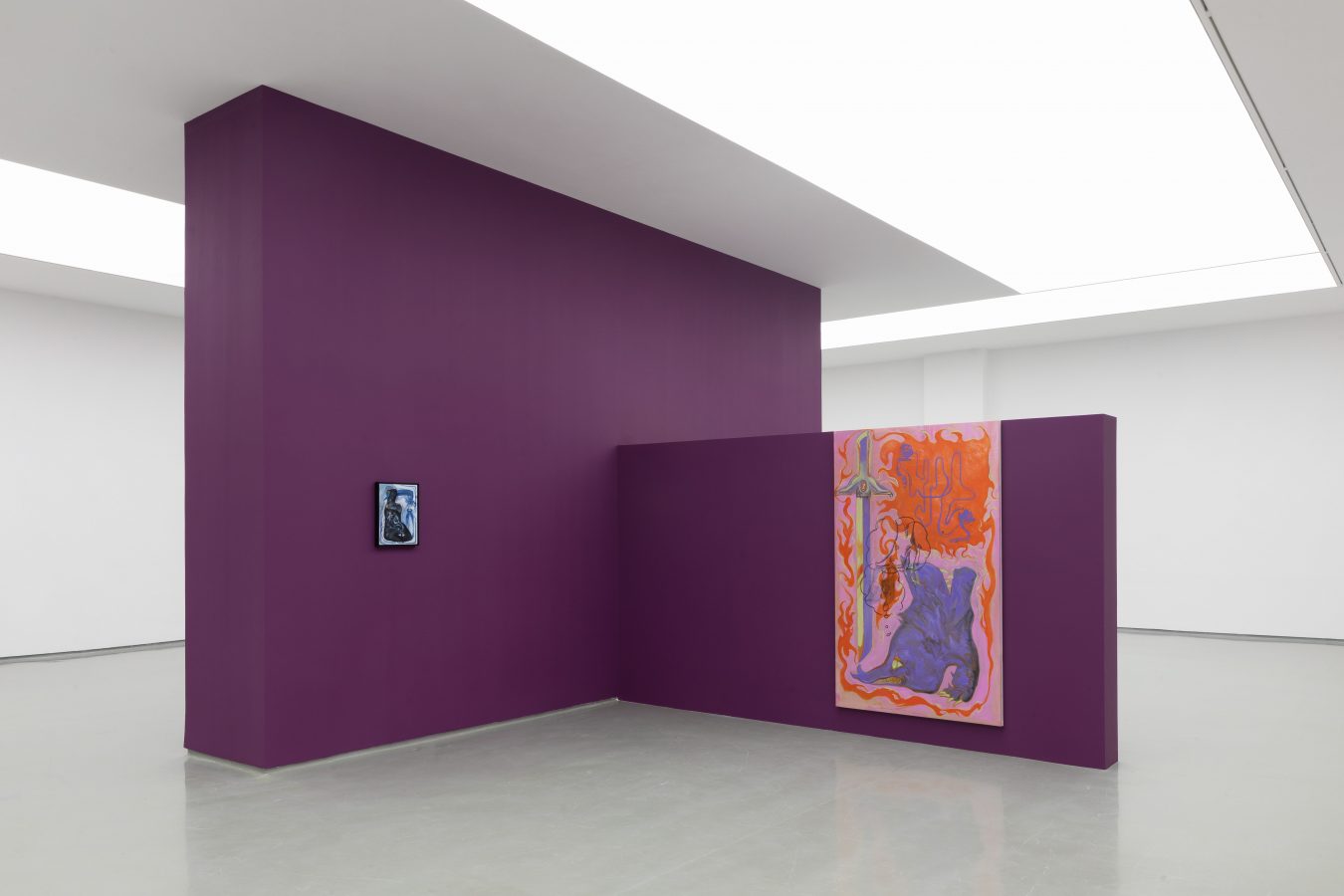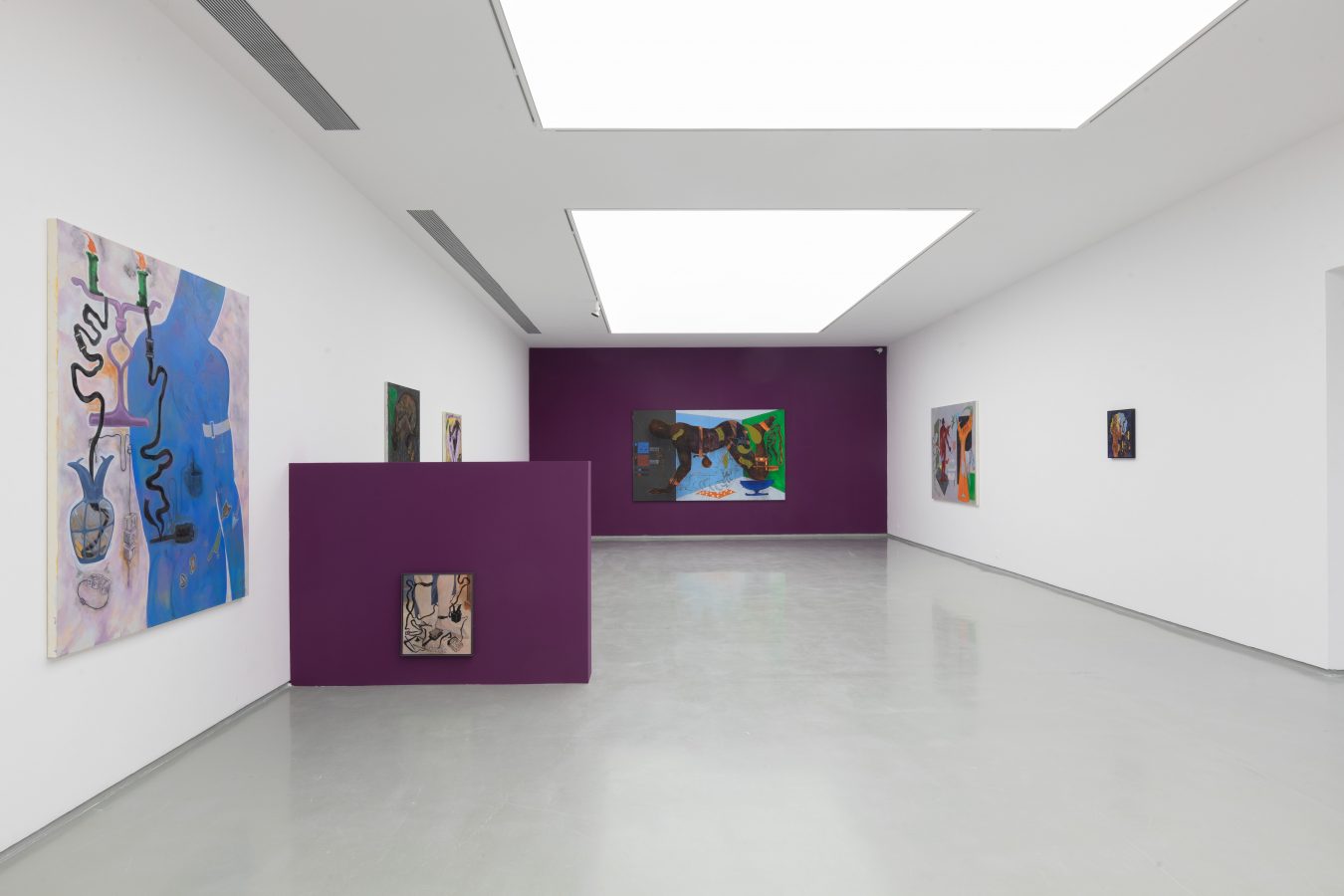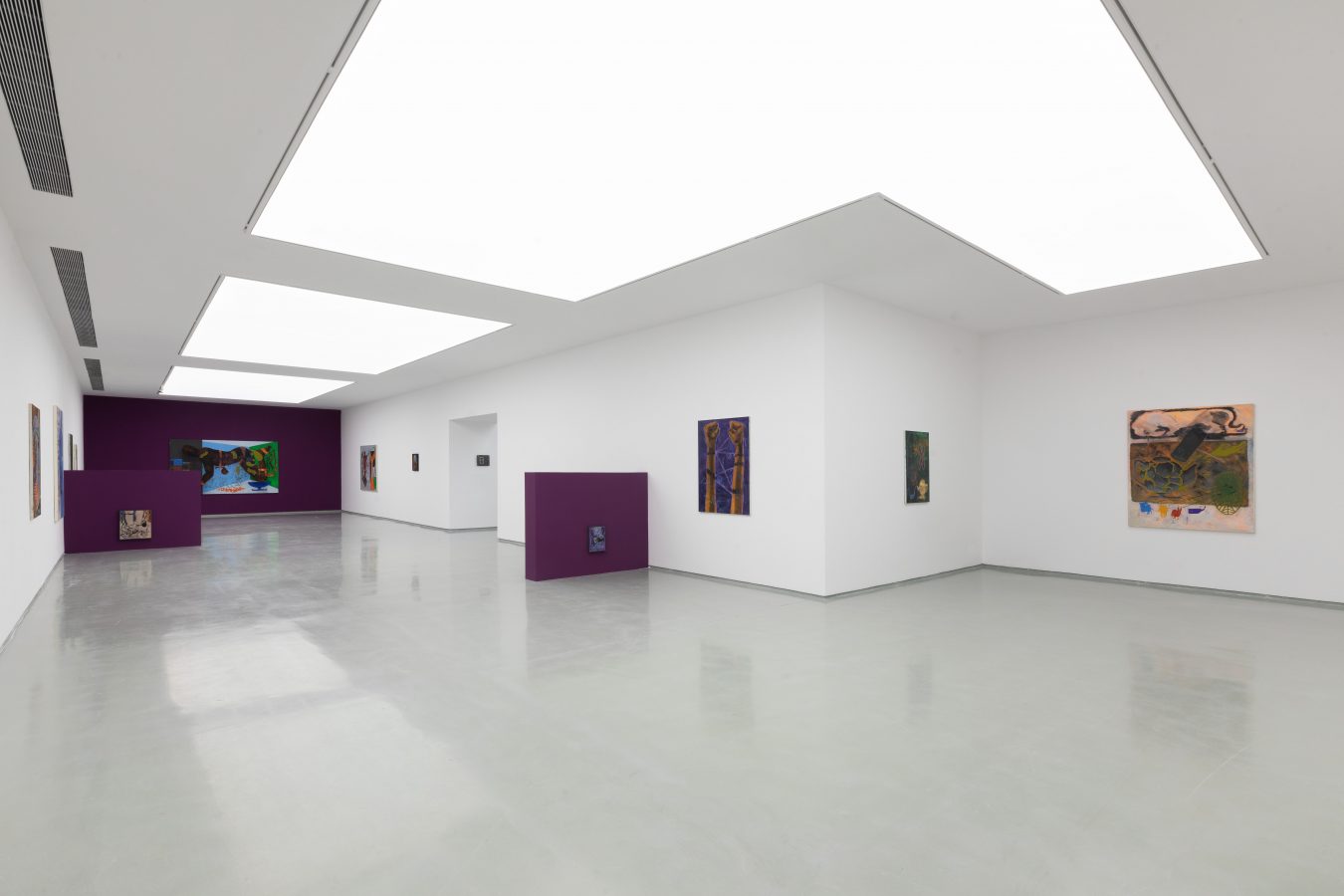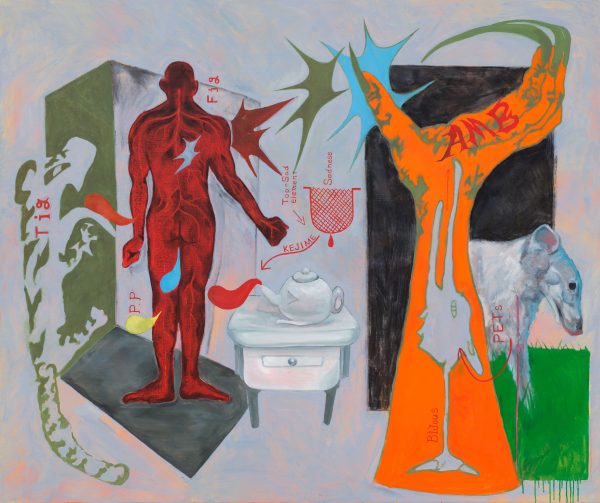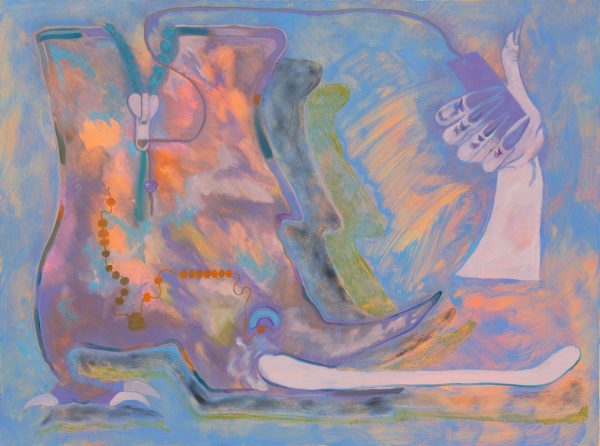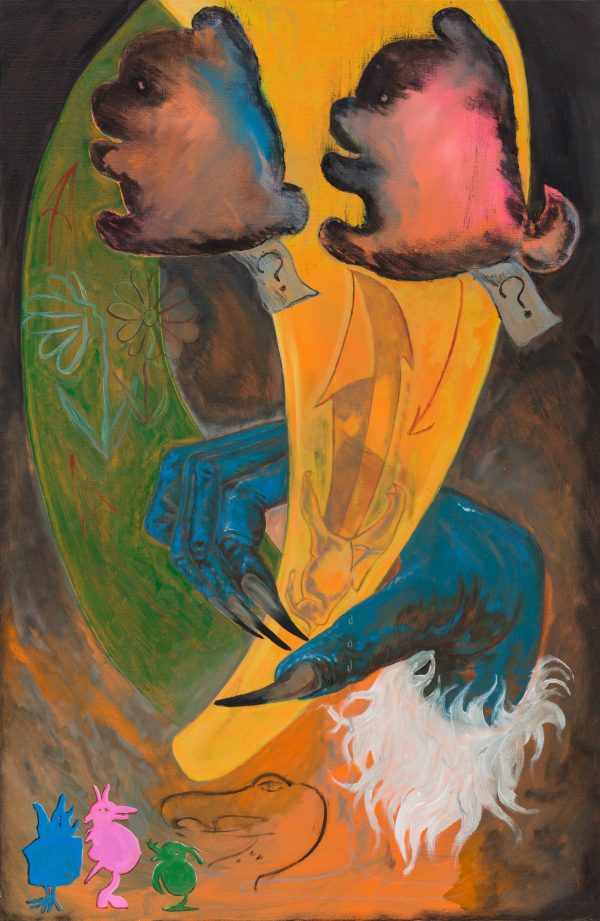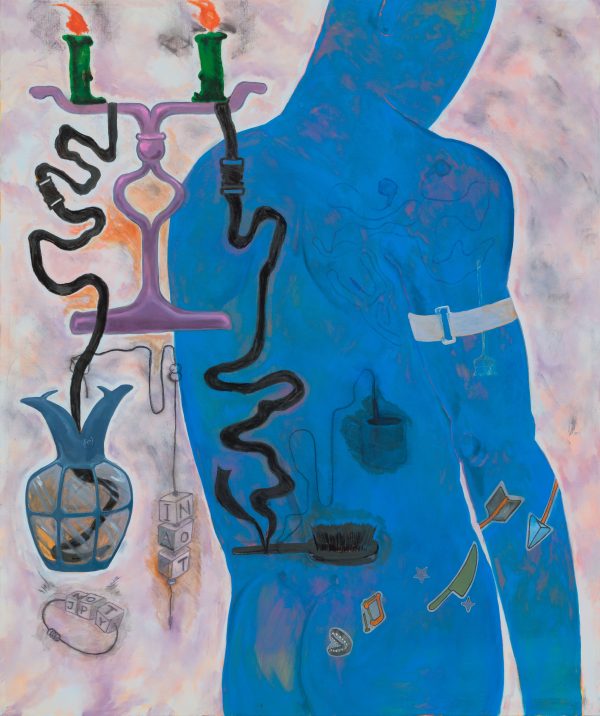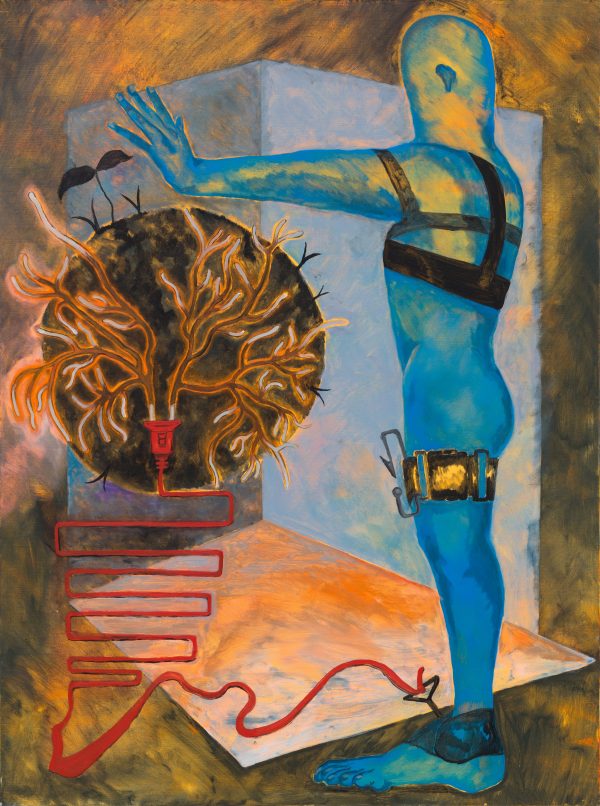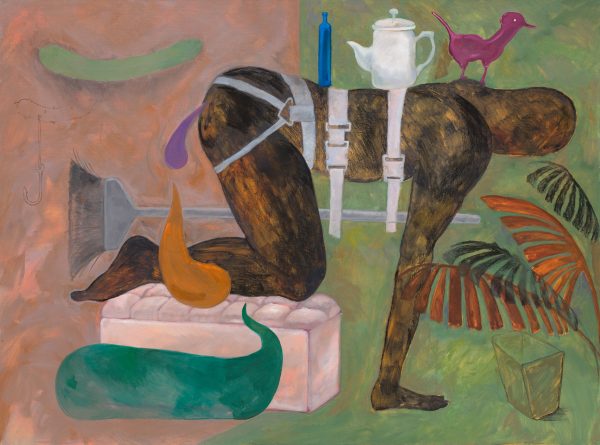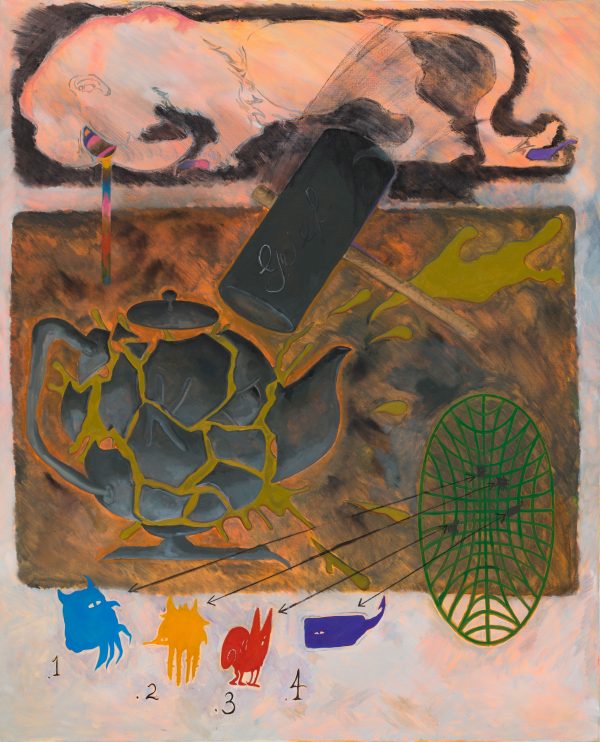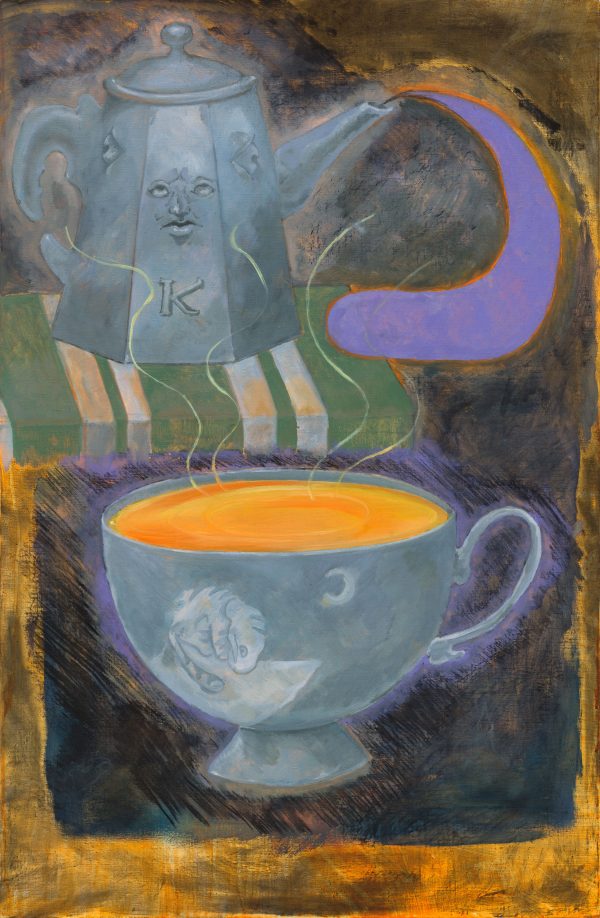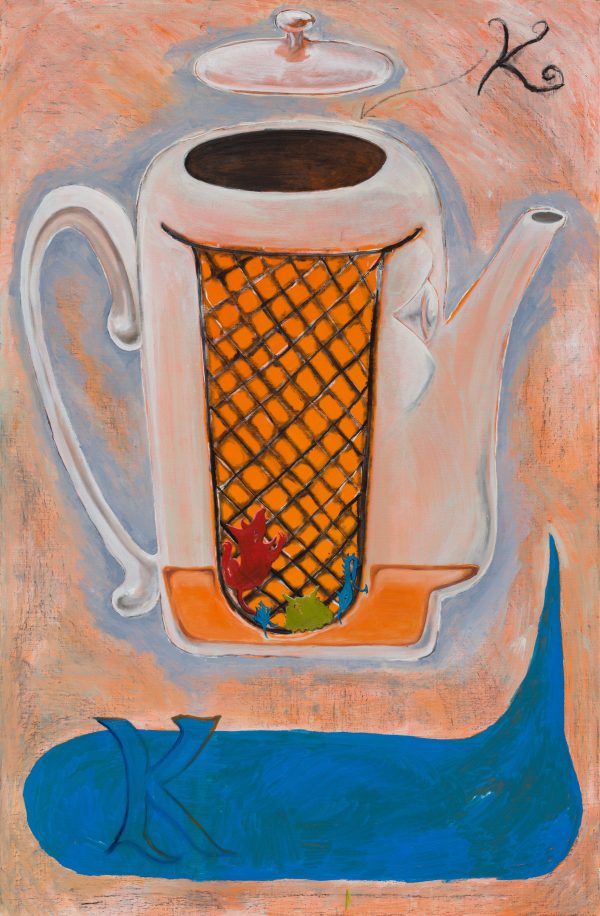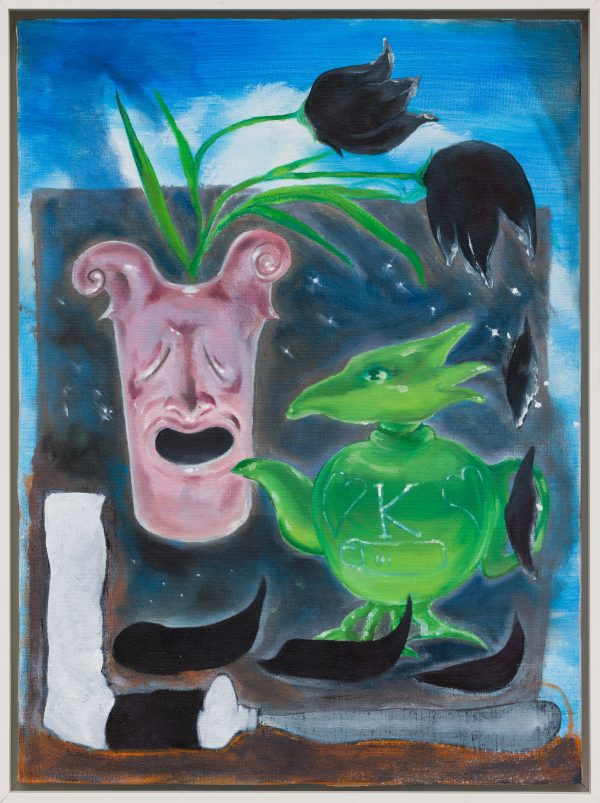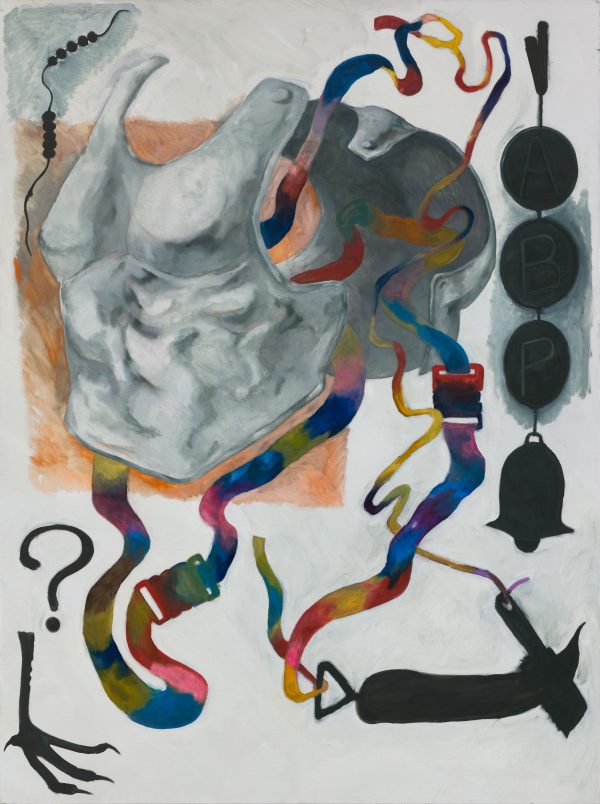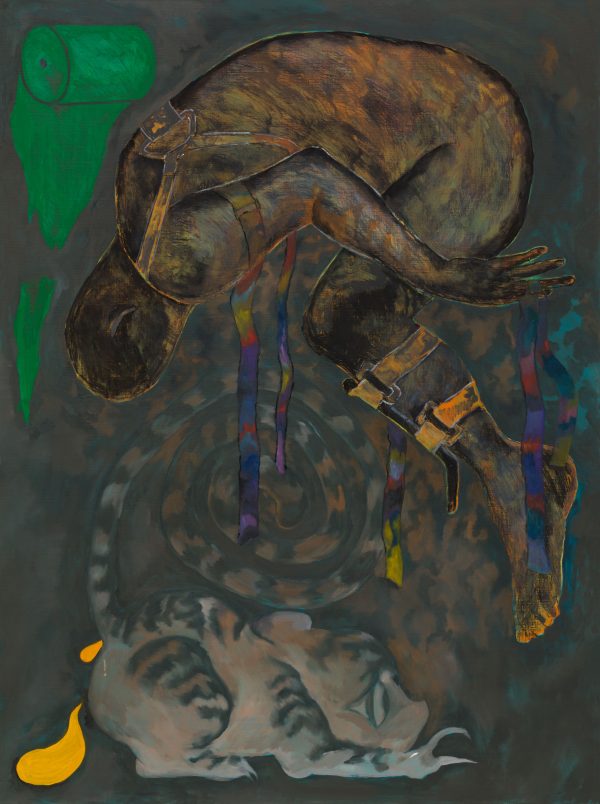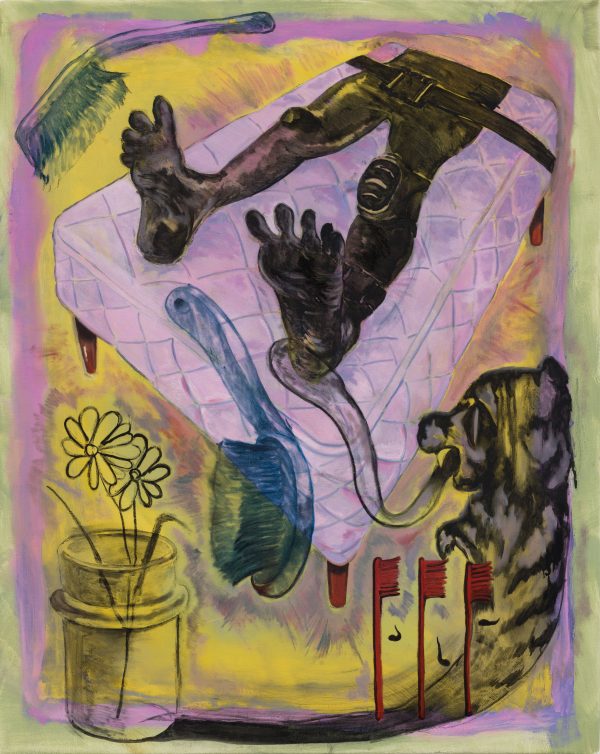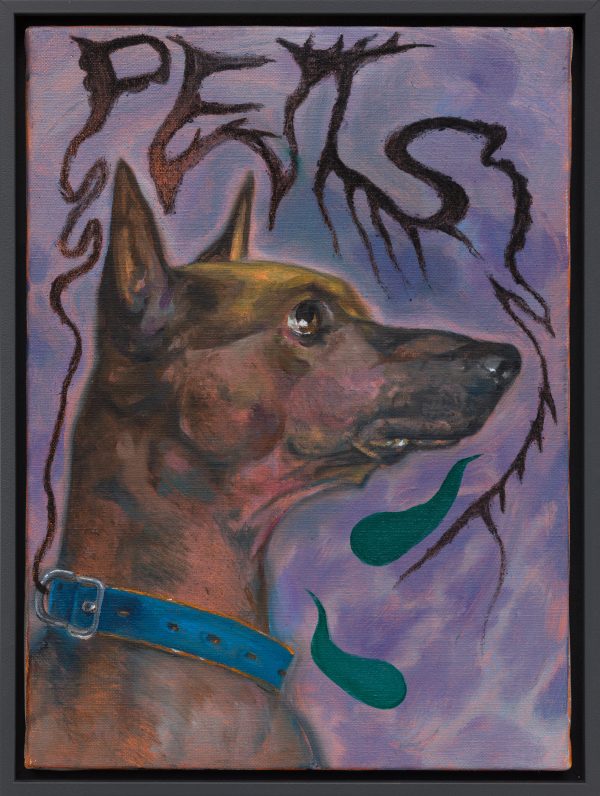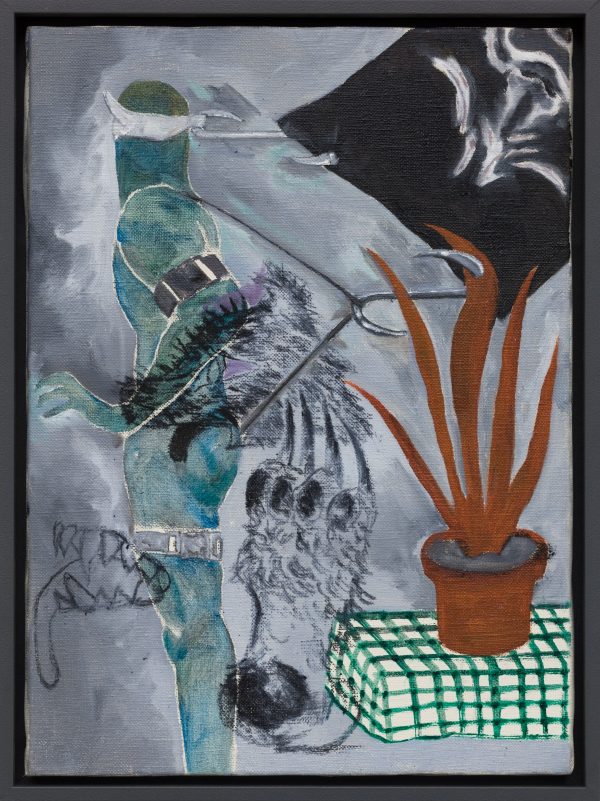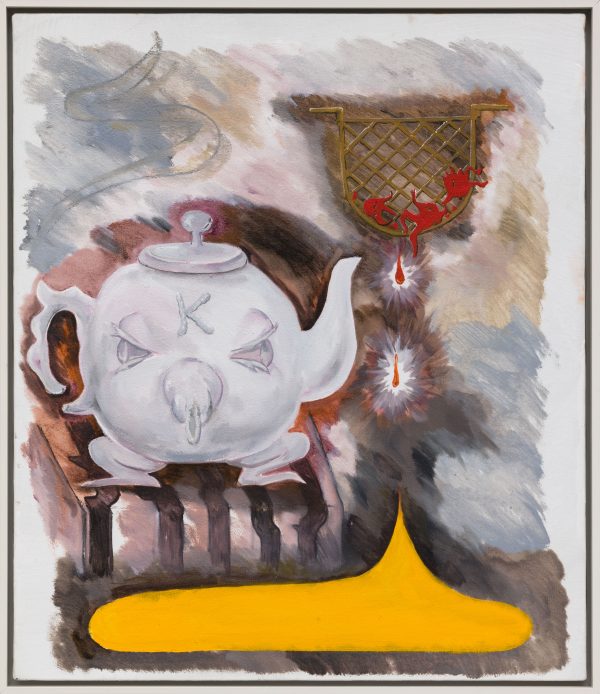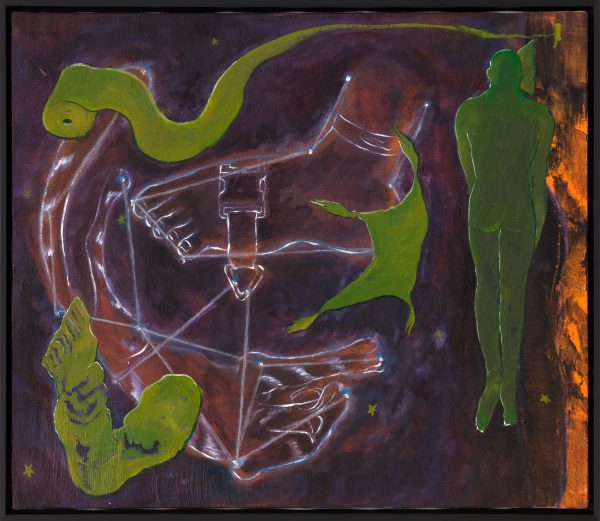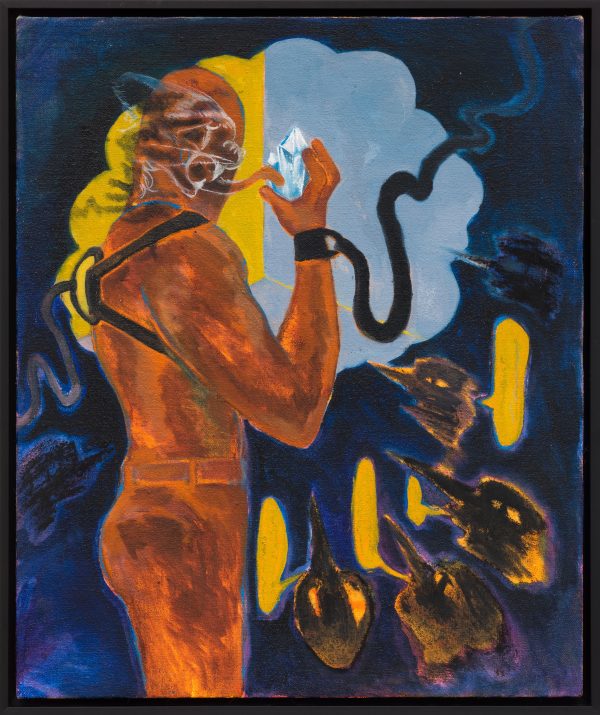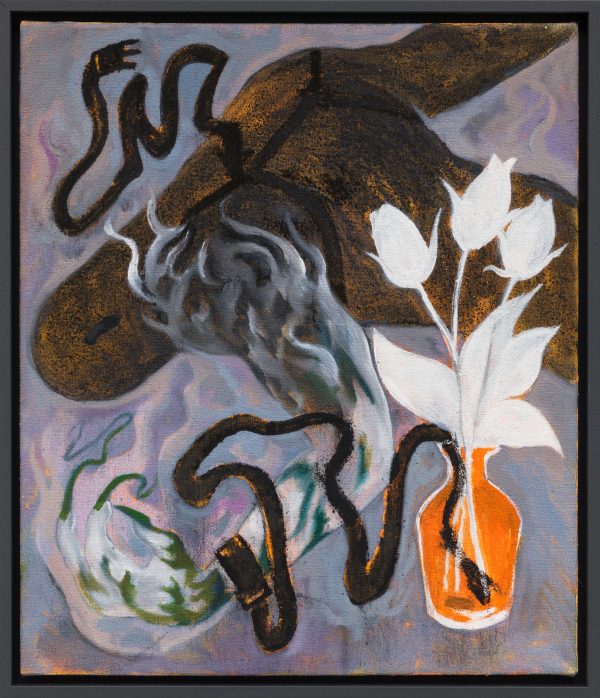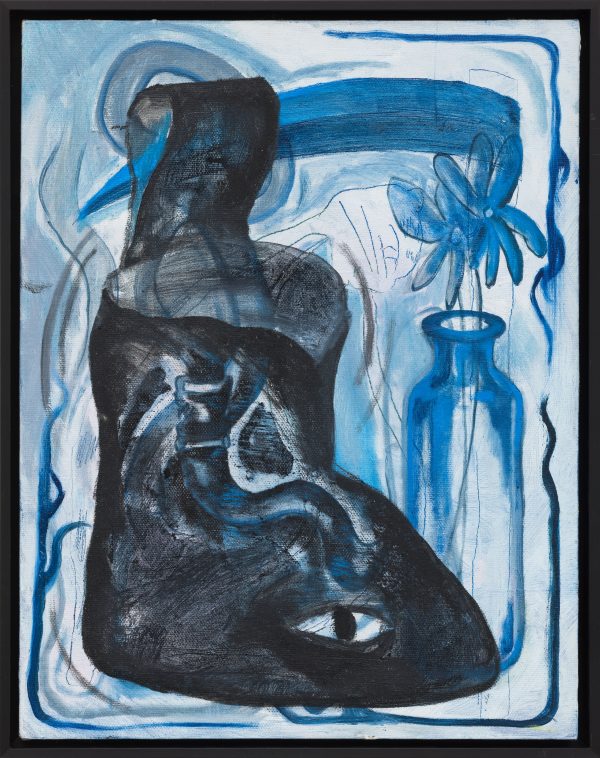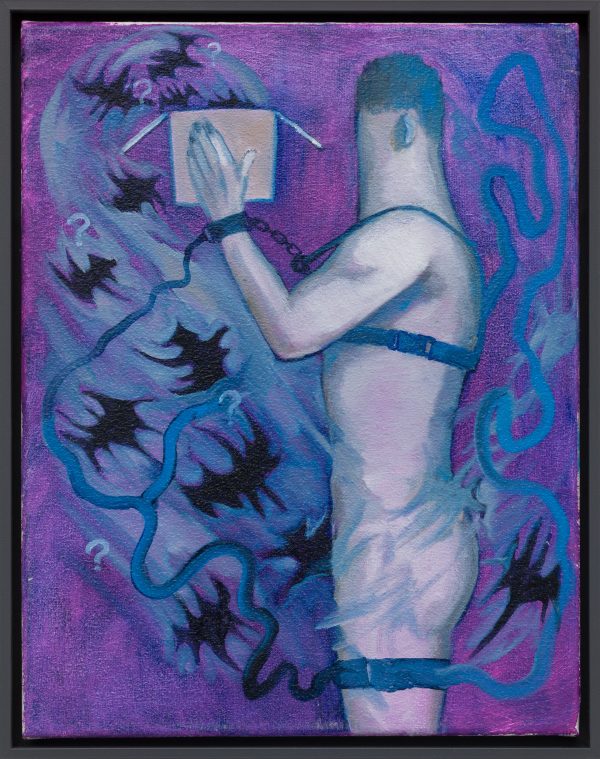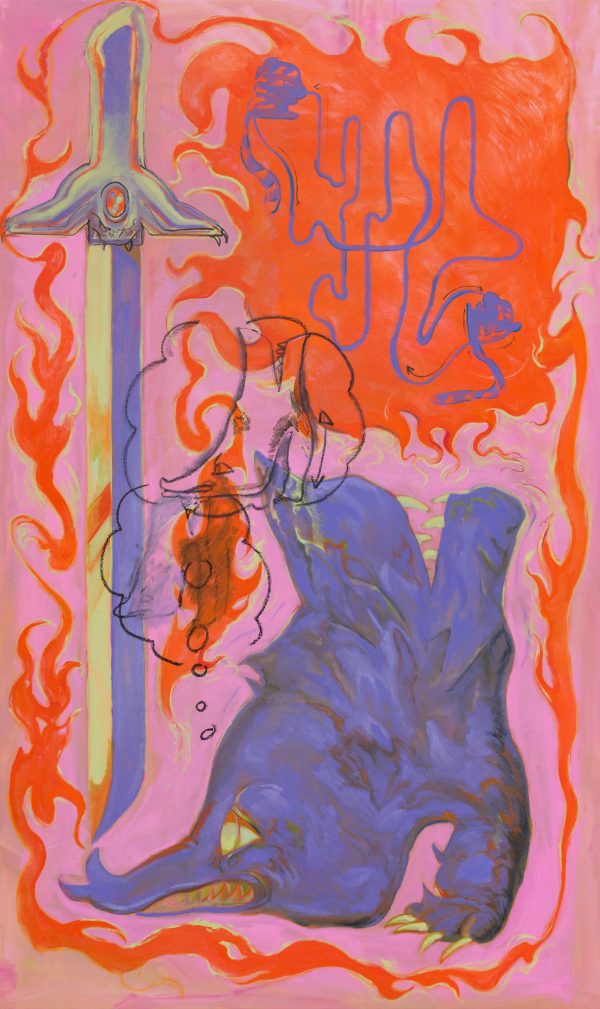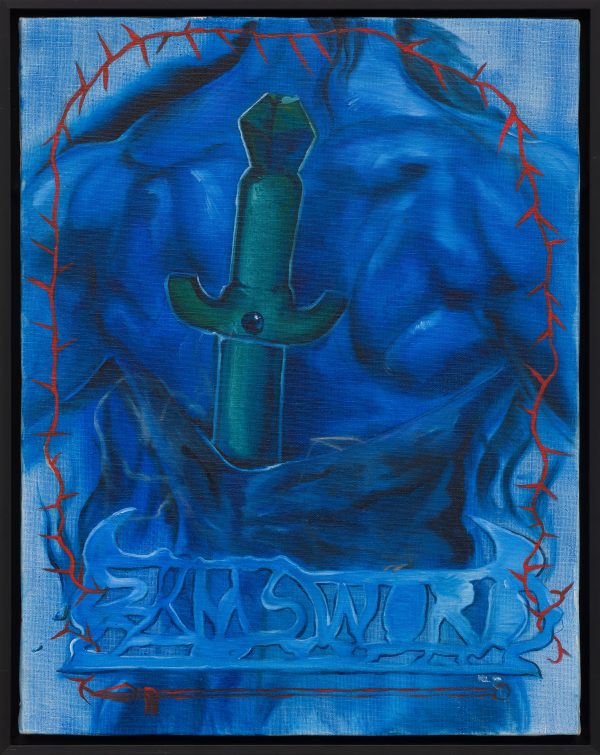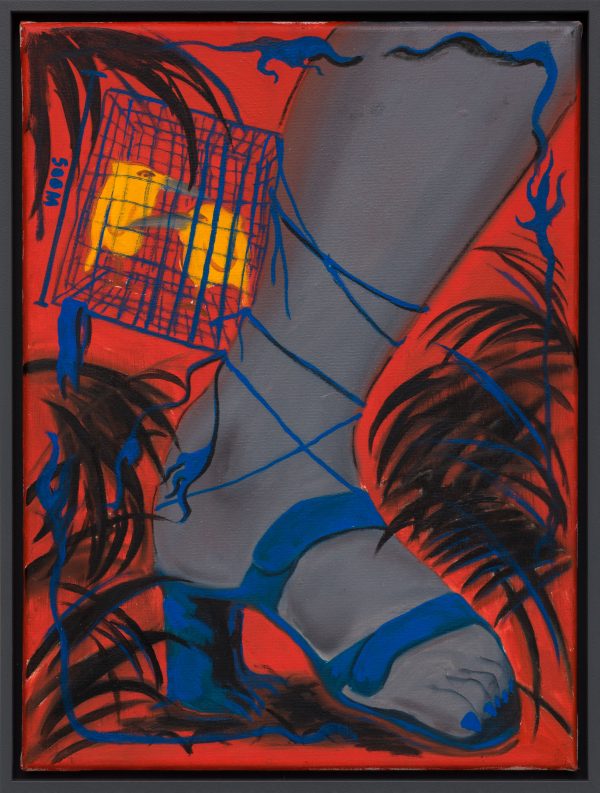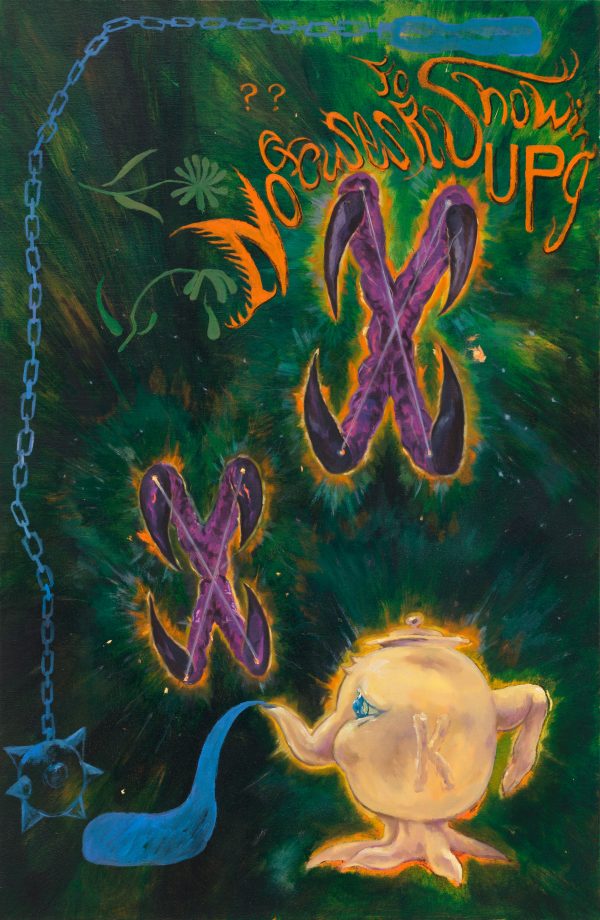
KAITO Itsuki
Oil and charcoal on canvas
100 x 65.2cm
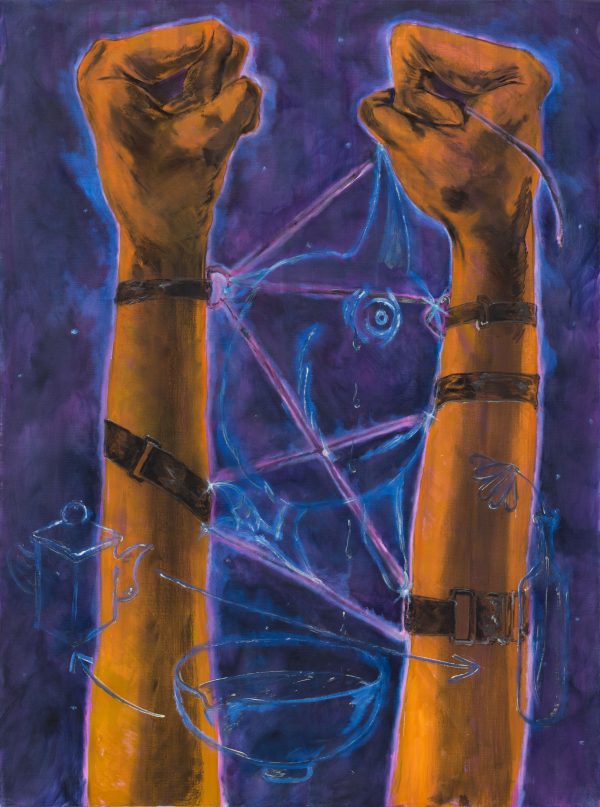
KAITO Itsuki
Oil and charcoal on canvas
130 x 97cm
n.污浊 [dirty];
轻慢不敬 [slight; not showing proper respect]
v.侮辱 [humiliate];
贪,求 [be greedy for];
滥用 [act wantonly; misuse]
Hive Center for Contemporary Art is pleased to announce the first major solo exhibition in China by Japanese artist KAITO Itsuki, “Blacken”, to be held in both B and C halls from 14 May 2022. This solo exhibition, curated by Hive’s young curator Tang Yifei, is also the latest exhibition organized by Hive along the framework of a global perspective focusing on the Asian art system, reorganizing how to understand the situation in the present and seeking a vision of future order. The exhibition will run until 3 July 2022.
Born in Sapporo, Hokkaido, Japan in 1993, KAITO Itsuki graduated from the Kyoto City University of the Arts (KCUA), Department of Painting in 2019. She currently lives and works in Tokyo. Based on the artist’s interest in ancient narratives such as myths and legends, comparative religions, combined with modern technical reflections such as chemistry and zoology, and a long upbringing in a sub-cultural context, KAITO’s work reconstructs aesthetic influences mostly from anonymous images floating around the internet, video games or manga. KAITO seeks to portray the human character and the imaginary creatures that illuminate the human psyche, using mythological metaphors to relate it to present society and reconceptualise the world.
Blackening, as opposed to indoctrination, signifies KAITO’s withdrawal from an ordinary worldview; She instead transcends the rigid hierarchy with hybrid biology and, cyclically, alternatively progresses in an insubordinate manner. Based on the ancient narrative, the desecration of established deities, i.e., aesthetic system, religious disciplines, conformist culture and social structure, allows self-consciousness to stimulate from an obscurer realm. A heterogeneous space, which possesses more authentic flesh and soul, is reimagined existing in the subconscious in a more impetuous and superficially de-civilized approach. The foundation of this exhibition is new prosperity between the utopian and dystopian worlds derived from the naturalism and primitivism nature of Japanese and even Southeast Asian cultures, presenting a candid mirage that transgresses the taboo. It is a more liberal and integrated context on reciprocating the imagined community’s social morality and social properties and re-examining the disembodied in the subculture. The mythopoeia and hierarchy reflect the self as an individual onto the systematic metabolism of society. Diversity and abused bodies are not established on a monotonous female perspective but on a balance between fluidity and gender that is being explored and left undefined; abstract negative sentiments such as violence and struggle are carried and hidden by everyday objects. These interrelations are a personal belief system that KAITO had established in an attempt to expose the hidden psychological deficiency of human civilization, narrate the examination of negative space of the indescribable, and overthrow the mental exploitation in contemporary life.
Hainuwele, a fabled figure in Indonesian mythology, is the wedge to KAITO Itsuki’s creation of mythopoeia, where she was born in a coconut flower. After her death, various types of grains grew on her body. Similar accounts are also found in the Japanese creation myth, Kojiki and Nihongi. A large number of myths of bodily incarnation have been preserved in Southeast Asian countries, as well as in India, Korea, and southern China. In an agrarian society where the desire for food and reproduction was fabricated and associated primitive religious system, humans would gradually realize their intertwining fear and hope raised from the connection between production and natural phenomena, developing supernatural beliefs and worship. In the contemplation of these ancient narratives, also for the unique concept of life and death in Japanese culture in which life and death can be transformed into each other, and that death is possible at any moment, etc., KAITO has composed a cyclical hierarchy of personalized expressions of supernatural powers: the Amazones series, the Bijous series, and the Petz serious. Amazones atop the hierarchy as a powerful goddess who never reveals her complete form in KAITO’s work but partially projects her extreme ego and overflowing desires with her hands, feet, and weaponry; Bijous is a Chimera beast in a dynamic and unstable state in the process of trying to awaken and incubate to be Amazones’s shoes or decorations; Petz, on the other hand, is a relatively more rigid puppet that transforms into Bijous when subjected to certain stimuli. Meanwhile, this hierarchy is in a constant cycle of self-sufficiency. When Amazones’s ego expends beyond her capacity and collapses, the scattered body parts become Petz’s nourishment for growing; and the cycle begins again rapidly. A chaotic order is created in this illegitimate hybridization of body metamorphosis that weaves personal beliefs about how people perceive their position and how they embed themselves into society. The reclining Cross on the floor of the gallery embraces this predicament and reconciles it with personalized beliefs, and borrows a large, divine structure with staggered walls to project the growth process of this heterogeneous space, thus creating a field that needs to be viewed from around and draws attention high and low and wandering. From low to high, Petz to Amazones, the creatures on the canvas are haunted by curving lines and scrubbing brushstrokes and directional instructions implied in the chaotic backgrounds, hinting at the deception of social life: how we, in the crowd, are domesticated by social disciplines into stereotypical pets categorized by labels; and how we suffer from the agitation and anxiety, seeking a hidden outlet as a carrier for emotions and lusting for the desires to face ourselves while eventually possibly being consumed by them. KAITO’s extreme yearning for self as a religious belief baptizes the viewers in a third space between the present and the mythical and makes it possible for the audience to receive the flexible and shifting social roles and attempt the liberation of the scarce spirit restricted by social life.

